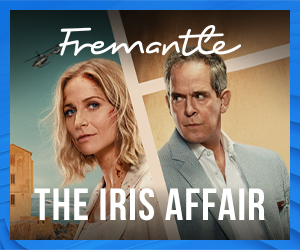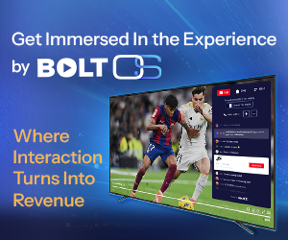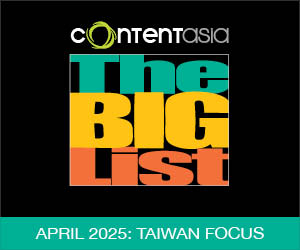Partho Dasgupta has been preparing to set up the world’s largest TV audience measurement system almost all his professional life. At least that’s what it seems like.
The chief executive officer of India’s Broadcast Audience Research Council (BARC) – India’s answer to Nielsen-Kantar’s TAM Media Research – reckons that whatever he did over the last 20 or so years has come to fruition at BARC.
“My passion has always been start-ups. And what I bring (to BARC) is my love for technology, start-ups and media,”he says.
He describes BARC as a technology-based research firm with more than 76% of its investment going into the software and hardware needed to collect and analyse data from 22,000 of India’s 161 million TV homes.
For now BARC, which began releasing data in April this year, only reports 12,000 homes. In four years the plan is to take this to 50,000.
It is a hot June morning and we are chatting over breakfast at The Oberoi in Gurgaon, on the outskirts of Delhi.
From credit rating agency CRISIL, TV channel Times Now, Future Media and then Educomp Childcare and Schools, Dasgupta, 49, has been part of an eclectic bunch of start-ups.
Much of this could have helped gain functional experience but BARC is not just about the one petabyte of data crunched.
The audience measurement venture was set up in 2012 between the Indian Broadcasting Foundation, Indian Society of Advertisers and Advertising Agencies Association of India. The egos involved are huge and so is the conflict of interest between broadcasters, agencies and advertisers. How did he handle it?
Dasgupta admits that it was a challenge, “carrying the various stakeholders, with their varying interests, together”.
That however was not the toughest part, he adds.
“The biggest achievement in these two years has been getting the funding going without any of the members shelling out cash,” Dasgupta says, explaining that BARC is a section 8, not-for-profit firm.
“We can make and use profits but cannot repatriate them to shareholders. So the venture capi...
Partho Dasgupta has been preparing to set up the world’s largest TV audience measurement system almost all his professional life. At least that’s what it seems like.
The chief executive officer of India’s Broadcast Audience Research Council (BARC) – India’s answer to Nielsen-Kantar’s TAM Media Research – reckons that whatever he did over the last 20 or so years has come to fruition at BARC.
“My passion has always been start-ups. And what I bring (to BARC) is my love for technology, start-ups and media,”he says.
He describes BARC as a technology-based research firm with more than 76% of its investment going into the software and hardware needed to collect and analyse data from 22,000 of India’s 161 million TV homes.
For now BARC, which began releasing data in April this year, only reports 12,000 homes. In four years the plan is to take this to 50,000.
It is a hot June morning and we are chatting over breakfast at The Oberoi in Gurgaon, on the outskirts of Delhi.
From credit rating agency CRISIL, TV channel Times Now, Future Media and then Educomp Childcare and Schools, Dasgupta, 49, has been part of an eclectic bunch of start-ups.
Much of this could have helped gain functional experience but BARC is not just about the one petabyte of data crunched.
The audience measurement venture was set up in 2012 between the Indian Broadcasting Foundation, Indian Society of Advertisers and Advertising Agencies Association of India. The egos involved are huge and so is the conflict of interest between broadcasters, agencies and advertisers. How did he handle it?
Dasgupta admits that it was a challenge, “carrying the various stakeholders, with their varying interests, together”.
That however was not the toughest part, he adds.
“The biggest achievement in these two years has been getting the funding going without any of the members shelling out cash,” Dasgupta says, explaining that BARC is a section 8, not-for-profit firm.
“We can make and use profits but cannot repatriate them to shareholders. So the venture capital or private equity route was out,” he says.
BARC raised US$28 million through banks with shareholders, which include some of India’s biggest broadcasters and advertisers, standing as guarantors. This ensures that everyone in the US$7.5-billion television industry has a stake in making BARC ratings a success and everyone loses if the service fails.
Broadcasters spent about US$16 million more on watermarking technology that ensures security, which is a huge issue in India.
In fact, security is the reason the process was broken up into 12 parts and given out to about 30 vendors.
“India needed a scalable yet value-for-money rating system. Given that our ad-to-GDP ratio is very low, these are conflicting imperatives,” he says.
Eventually, the cost of the meters was brought down to less than US$400. By comparison, the TAM meters cost a reported US$2,400 each.
Dasgupta isn’t stopping there. “We want to get it down to US$160,” he adds.
At 50,000 meters, BARC could probably drive the cost down to that or less.
But will it solve the problem of cherry-picking data that niche channels – news, music – are inclined to do?
It was this cherry picking over a small, statistically unstable sample that caused the heartburn with TAM data in the first place.
How will BARC avoid similar pitfalls?
A definitive answer has not yet emerged. “We are debating it though it is a subject for the Indian Broadcasting Foundation,” Dasgupta says.
An answer is critical because, within trade circles, the perception that BARC is dominated by the big broadcasters is gaining ground.
Dasgupta is unfazed.
“The Indian Broadcasting Foundation has a 60% stake in BARC. The Indian Society of Advertisers and Advertising Agencies Association of India have 20% each. If broadcasters are dominating they would dominate IBF, because it is between them that they need to work. Advertisers are very vocal members on the (BARC) board,” he says. Clearly, so far so good.
– http://twitter.com/vanitakohlik



























